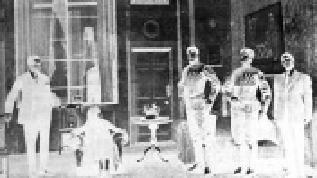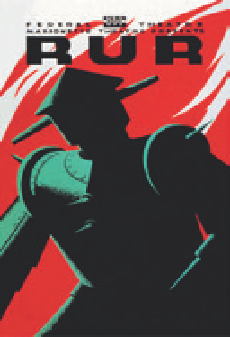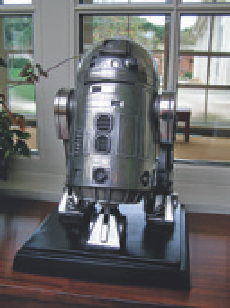Information Technology Reference
In-Depth Information
“Runaround” is set at a mining station on Mercury where two engineers,
Powell and Donovan, have been sent with a robot called Speedy to restart
operations. When Speedy is sent out to fetch some selenium it starts running
in circles around the radioactive source, caught in a feedback loop arising
from a conflict between the Second and Third Laws - either to obey orders
or to protect its existence. Powell eventually risks his life to force Speedy
to break out of his feedback loop by following the dictate of the First Law.
Clearly HAL's resolution of its conflict - killing the crew - would not have been
allowed by Asimov's First Law! Asimov wrote many short stories and two full-
length novels on the basis of logical puzzles arising from the Three Laws:
… there was just enough ambiguity in the Three Laws to provide the conflicts
and uncertainties required for new stories, and to my great relief, it seemed
always to be possible to think up a new angle out of the sixty-one words of
The Three Laws.
18
Fig. 17.6.
R.U.R.
was first published in
Czech in 1920 and was the first story
of a robot revolution. The play was so
successful that within three years it
had been translated into thirty-three
languages.
What can one say about Asimov's vision of the computer technology
needed for his robots? The first robot stories appeared years before the ENIAC
computer existed. Asimov needed to invent some wholly new technology to
explain his robots' intelligence - and he did this more in the style of Wells's
inventions than of Verne's more cautious scientific extrapolations. When
Asimov was writing his first robot stories, the physicist Carl Anderson, work-
ing at Caltech in 1932, had just discovered the positron - the antiparticle of
the electron - for which he was awarded the Nobel Prize. Antiparticles had
captured the public's imagination in the 1930s so Asimov made reference to
the new discovery of the positron and combined it with the idea of electronics
to come up with
positronic brains
for his robots. These brains enabled them to
think, act, and communicate independently. Rather schizophrenically, Asimov
was writing about gigantic computers the size of a city at the same time that
he was writing stories with the same amount of computing power contained
within the volume of a robot's head!
Sentient humanoid robots, such as R. Daneel Olivaw, first introduced in
Asimov's robot detective novel
The Caves of Steel
, are now the norm in science
fiction movies. In his 1977
Star Wars
movie, George Lucas introduced us to
the likeable and loyal robots C3PO and R2D2 (
Figs. 17.8a
and
17.8b
). In 1986,
Short Circuit
's hero Johnny Five becomes the United States' first robotic citizen
Fig. 17.7. A scene from the play
R.U.R.
by
Karel Čapek showing three humanoid
robots.
(a)
(b)
Fig. 17.8. The robots (a) C3PO and (b) R2D2 from the 1977 movie
Star Wars Episode IV: A New Hope
.




Search WWH ::

Custom Search